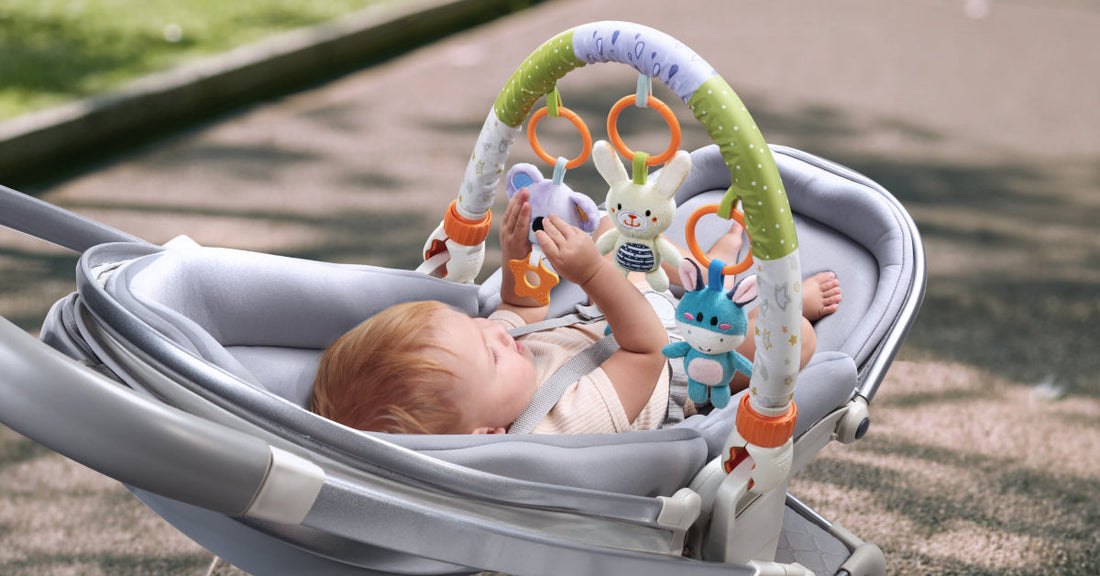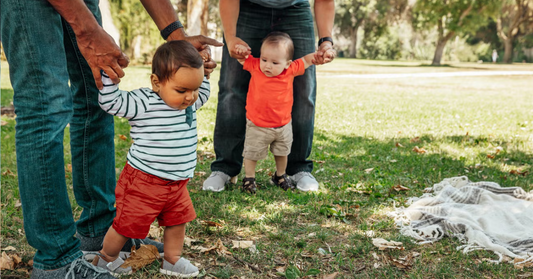Quand bébé peut-il s'asseoir dans une poussette?

De nombreux jeunes parents se demandent quand leur bébé pourra tenir assis en toute sécurité dans une poussette. Plutôt que de se fier uniquement à l'âge, il est essentiel de vérifier deux étapes clés du développement : un bon contrôle de la tête et un bon équilibre postural. Cet article explique pourquoi ces compétences sont importantes, comment les tester à la maison et que faire si votre bébé n'est pas encore tout à fait prêt. Grâce à des conseils étape par étape, vous saurez exactement quand votre bébé sera prêt pour des sorties en poussette sûres et agréables.
Vous vous demandez quand votre bébé pourra s'asseoir en toute sécurité dans une poussette ? De nombreux jeunes parents sont confus et anxieux, ne sachant pas quel est le bon moment et s'inquiétant des risques potentiels pour leur sécurité. Cette incertitude peut être source de stress, surtout lorsqu'on a hâte de faire de belles promenades avec son petit. Heureusement, il existe une solution simple : plutôt que de vous fier uniquement à l'âge, vérifiez si votre bébé a atteint deux étapes clés de son développement : le contrôle de la tête et l'équilibre postural.
La plupart des bébés peuvent commencer à s'asseoir dans une poussette semi-inclinée vers 3 ou 4 mois, et passer à un siège entièrement vertical vers 6 mois. Cependant, l'âge seul n'est pas le meilleur indicateur. Il est essentiel que votre bébé ait développé un bon contrôle de la tête et un bon équilibre postural avant de pouvoir s'asseoir droit. Le suivi de ces deux étapes clés garantit que votre bébé est assis confortablement et en toute sécurité dans la poussette.
Bien que cela vous donne une idée générale, chaque bébé se développe différemment. Pour déterminer avec précision si votre tout-petit est prêt, vous devez effectuer des tests de développement simples. Poursuivez votre lecture pour savoir exactement comment vérifier si votre bébé a franchi les étapes nécessaires et ce que vous pouvez faire s'il ne l'a pas fait.
Qu’est-ce que le contrôle de la tête et pourquoi est-il important pour s’asseoir dans une poussette ?
Êtes-vous inquiet des mouvements saccadés de la tête de votre bébé lorsqu'il est assis ? Un mauvais contrôle de la tête peut engendrer de graves problèmes de sécurité et une anxiété compréhensible chez les parents. Heureusement, comprendre l'importance du contrôle de la tête et savoir reconnaître les moments où votre bébé en souffre peut atténuer ce stress.
Contrôle de la tête Il s'agit de la capacité de votre bébé à maintenir sa tête droite sans appui ni oscillation excessive. Un bon contrôle de la tête est essentiel pour éviter que la tête de votre bébé ne bascule vers l'avant ou sur le côté dans la poussette, ce qui pourrait obstruer ses voies respiratoires ou provoquer des tensions dans le cou. Les bébés développent généralement un contrôle adéquat de leur tête entre 3 et 4 mois.
Comment puis-je vérifier si mon bébé a un bon contrôle de la tête ?
Vous n'êtes pas sûr que le contrôle de la tête de votre bébé soit suffisamment fort pour les promenades en poussette ? Cette incertitude peut être une source d'inquiétude pour les parents, mais il existe un moyen simple de le vérifier.
Pour évaluer le contrôle de la tête, asseyez votre bébé sur vos genoux et soutenez délicatement sa cage thoracique avec vos mains. Observez attentivement les mouvements de sa tête. Un bébé qui contrôle bien sa tête la maintient stable, sans trembler ni vaciller. Son menton ne doit pas reposer sur sa poitrine, mais doit rester dégagé, facilitant ainsi sa respiration. De plus, déplacez doucement votre bébé d'un côté à l'autre ; si sa tête reste stable et alignée avec le centre de son corps, il a atteint cette étape.
Qu’est-ce que l’équilibre postural et pourquoi est-il important pour l’utilisation d’une poussette ?
Votre bébé s'affaisse-t-il ou se penche-t-il fortement d'un côté lorsqu'il est assis ? Un mauvais équilibre postural dans une poussette peut être source de graves inquiétudes, rendant les parents inquiets pour le confort et la sécurité de leur bébé.
L'équilibre postural désigne la capacité de votre bébé à maintenir une position assise stable et symétrique, qu'il soit incliné ou redressé. Un bon équilibre postural évite une inclinaison excessive, source d'inconfort, de difficultés respiratoires, voire de blessures accidentelles dues à un enchevêtrement dans le harnais de la poussette. Un bon alignement assure le maintien de la colonne vertébrale, du cou et de la tête de votre bébé, réduisant ainsi considérablement les risques de blessures. risque de tension ou d'inconfort.
Comment vérifier si mon bébé a un bon équilibre postural ?
Le doute quant à l'équilibre postural de votre bébé peut vous rendre hésitant et inquiet. Heureusement, un simple test d'observation peut facilement déterminer si votre bébé est prêt.
Placez votre bébé dans une position assise légèrement inclinée, par exemple sur vos genoux ou dans un transat.Observez attentivement de face et de côté. Un bon équilibre postural signifie que votre bébé maintient un alignement symétrique, avec une ligne droite imaginaire reliant la tête au coccyx, le long de la colonne vertébrale. Votre bébé ne doit pas trop se pencher d'un côté ou de l'autre, et son torse doit rester équilibré, sans s'affaisser ni en avant ni en arrière. La réussite de ce simple test d'observation indique que votre bébé a un équilibre postural suffisant pour l'utilisation de la poussette.
Que dois-je faire si mon bébé n’est pas prêt à s’asseoir dans une poussette ?
Découvrir que votre bébé n'est pas encore prêt à s'asseoir dans une poussette peut être décourageant pour les parents impatients. Mais pas d'inquiétude : il existe des moyens efficaces pour aider votre tout-petit à franchir ces étapes cruciales.
L'une des méthodes les plus efficaces et les plus simples est le temps sur le ventre. Le temps régulier sur le ventre renforce les muscles du cou, des épaules et du tronc de votre bébé, améliorant ainsi considérablement le contrôle de sa tête et son équilibre postural. Essayez de faire plusieurs courtes séances quotidiennes sur le ventre (si votre bébé résiste au temps sur le ventre, vous pouvez essayer). jouets pour le temps sur le ventre (pour susciter son intérêt.), augmentez progressivement la durée de chaque séance à mesure que votre bébé grandit. Avec une pratique régulière, votre bébé acquerra rapidement la force et la stabilité nécessaires pour profiter en toute sécurité des promenades en poussette.
Conclusion
Déterminer quand votre bébé peut s'asseoir en toute sécurité dans une poussette ne dépend pas seulement de son âge : il est plus important de s'assurer qu'il a atteint les étapes clés de son développement : le contrôle de la tête et l'équilibre postural. Effectuez les tests simples décrits dans cet article pour vérifier si votre bébé est prêt. S'il n'y est pas encore, pas d'inquiétude ; des moments réguliers sur le ventre l'aideront à acquérir la force dont il a besoin. Bientôt, vous serez tous les deux prêts à vivre ensemble des aventures en poussette confortables, sûres et agréables.
Si votre bébé n'a pas encore acquis ces compétences, l'un des meilleurs moyens de développer la force de son cou et de son tronc est de le mettre sur le ventre. Lire cet article à côté de apprenez à passer du temps sur le ventre avec votre bébé.







0 commentaires